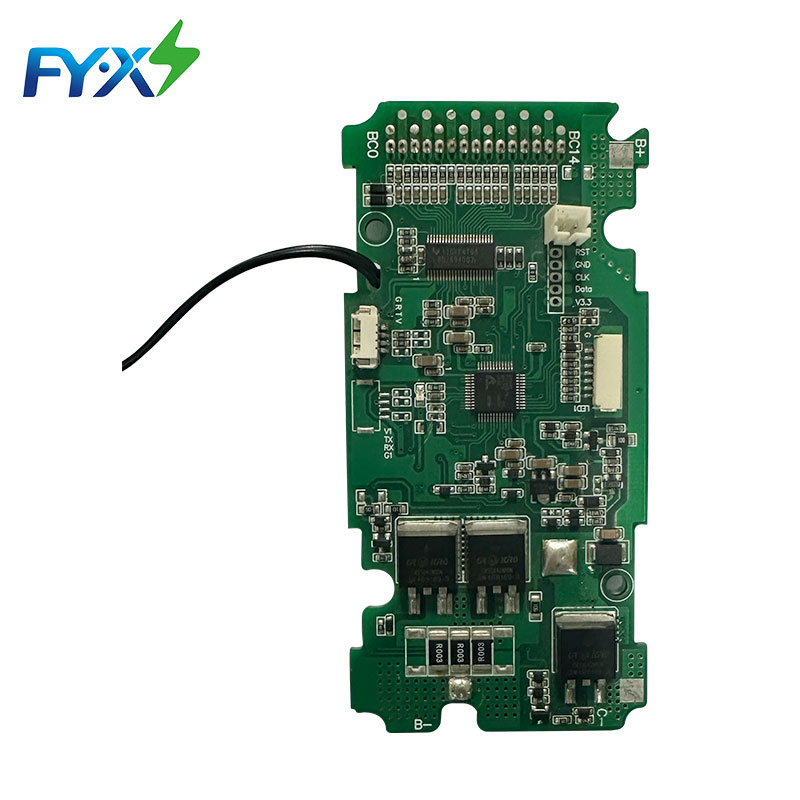Why Is a BMS Essential for Your E-Bike?
2024-12-19
When it comes to electric bikes (e-bikes), the Battery Management System (BMS) plays a crucial role in ensuring both performance and safety. But what exactly is a BMS, and why is it so essential for the smooth functioning of your e-bike?
In this blog, we will explore the function of a Battery Management System (BMS), its significance in e-bikes, and how it helps maximize battery life, ensure safety, and enhance the overall performance of your electric bike.
What Is a Battery Management System (BMS)?
A Battery Management System (BMS) is an integrated system that manages and monitors the performance of the e-bike’s battery. It ensures that the battery operates safely, efficiently, and effectively by regulating charge and discharge cycles, balancing individual cells, protecting against overcharging or discharging, and providing critical data to the rider about the state of the battery.
The BMS serves as the "brain" of the battery, optimizing its lifespan, improving energy efficiency, and protecting both the battery and the rider from potential hazards like overheating or battery failure.
Why Does Your E-Bike Need a BMS?
The BMS is a critical component of your e-bike for several reasons. Here’s why it’s essential for your ride:
1. Battery Protection and Safety
One of the primary functions of a BMS is to protect the battery from damage. Batteries, especially lithium-ion types commonly used in e-bikes, can be sensitive to extreme charging and discharging conditions. The BMS monitors the battery’s voltage, temperature, and current, ensuring they remain within safe limits.
- Overcharging Protection: Charging a battery beyond its recommended voltage can lead to overheating, capacity loss, or even a fire. A BMS prevents this by cutting off the charging current when the battery reaches full capacity.
- Over-Discharging Protection: Discharging the battery too much can also damage it. The BMS cuts off power when the battery voltage drops too low, protecting it from deep discharge and ensuring a longer battery life.
- Temperature Monitoring: High temperatures can damage battery cells, leading to reduced efficiency or complete failure. The BMS ensures that the battery temperature stays within an optimal range, preventing overheating or freezing conditions.
By ensuring safe operation under various conditions, the BMS significantly reduces the risk of battery failure, fires, or other safety hazards.
2. Maximizing Battery Life
Lithium-ion batteries, which are commonly used in e-bikes, are an investment. The BMS helps extend the lifespan of the battery by balancing the cells and regulating charge cycles. Over time, individual cells within the battery pack can develop slight imbalances, where some cells charge faster or discharge more quickly than others. This can lead to inefficient energy storage and a shorter battery life.
A BMS actively monitors and balances the charge levels of each cell, ensuring that all cells charge and discharge at the same rate. This ensures that no single cell is overworked, which not only optimizes energy use but also increases the overall battery lifespan.
3. Improved Energy Efficiency
The BMS helps maximize the energy efficiency of the e-bike by optimizing the power flow between the battery and the motor. It calculates the power required by the motor based on the rider's speed, terrain, and other factors, adjusting the energy usage accordingly.
Additionally, by regulating charge cycles and cell balance, the BMS ensures that energy is stored and used in the most efficient way possible, helping you get the most mileage per charge. This is especially important for riders who rely on their e-bike for commuting or long-distance travel.
4. Battery Health Monitoring and Data
The BMS provides valuable insights into the health of the battery and the overall performance of the e-bike. It tracks key metrics such as:
- Voltage levels of each cell
- Temperature data
- State of charge (SOC) and state of health (SOH)
- Current draw and charge cycles
This data can be displayed through a digital screen or app, allowing riders to monitor the battery’s status in real time. Knowing how much charge is left, the health of individual cells, and the overall efficiency of the battery can help you plan trips better and avoid running out of power unexpectedly.
Furthermore, some advanced BMS systems can also provide diagnostic information, allowing riders or technicians to identify and address any issues before they result in a significant problem.
5. Performance Optimization
The BMS also helps improve the overall performance of the e-bike. By ensuring the battery is always working at optimal efficiency, the BMS contributes to:
- Steady power output: Ensuring that the motor receives the correct amount of power, whether you're climbing a hill, cruising on flat ground, or accelerating.
- Regenerative braking: Some BMS systems allow for regenerative braking, where energy is returned to the battery during braking, extending your range and reducing wear on the brakes.
With a BMS managing the power flow, riders can enjoy a more consistent and reliable performance throughout their ride.
6. Cost Efficiency
E-bike batteries are often one of the most expensive components of the bike, so maintaining their longevity and performance is crucial for overall cost efficiency. By prolonging the life of the battery, reducing the chances of failure, and ensuring that it is used as efficiently as possible, a good BMS can save you money in the long run by delaying the need for a costly battery replacement.
7. Ease of Use and Troubleshooting
Many BMS systems come with built-in user-friendly interfaces, such as LED lights, displays, or apps that provide real-time information about battery performance. This makes it easier for the rider to understand the state of their battery and troubleshoot any issues.
For example, if the battery is overheating or the charge is running low, the system may send a warning or cut off power to prevent damage. These indicators make it much easier to maintain the battery and ensure the e-bike operates safely.
Conclusion: Why Does Your E-Bike Need a BMS?
A Battery Management System (BMS) is an essential component of any modern e-bike. Not only does it protect the battery from damage, but it also ensures optimal energy efficiency, extends battery life, and provides real-time data on battery health. For riders, this means a safer, more efficient, and longer-lasting e-bike that delivers reliable performance, trip after trip.



